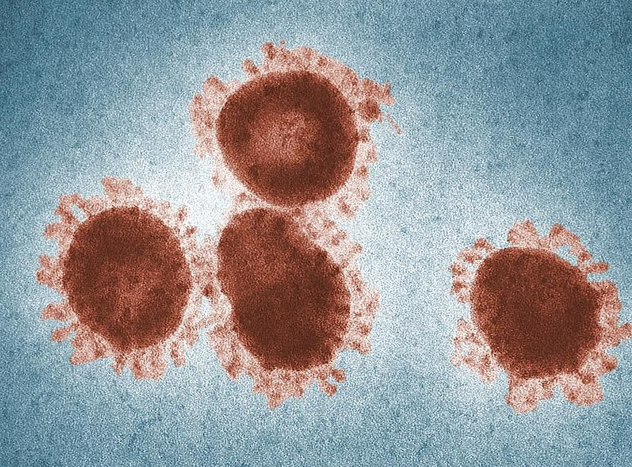



Infectious Bronchitis: Key points about vaccination
Introduction
Infectious Bronchitis is a major disease with a global presence which causes different challenges. Infectious Bronchitis is caused by the Avian Coronavirus. The virus is classified into different Genotypes, but the Genotype classification does not give us the full picture. Another classification is the serotype, as the serotype is the reaction between a specific antibody and a virus strain, but the serotype does not provide a complete immunological classification either, as different serotypes do not have full cross-protection between them. The variation of IBV serotypes is related to the variation of the S protein (Cavanagh, 1998), however nor does this provide the complete profile of the virus, as there is partial cross-protection between the different serotypes. The most widely used classification method is the protectotype (immunotype). The protectotype is the combination of different serotypes of the virus providing a broader protection than just the serotype vaccinated.
The clinical signs of infectious bronchitis can vary, from respiratory symptoms to nephritis, poor egg production, poor egg quality etc., as there is a variety of tissue trophism in the different IB strains, normally the systems that are mainly affected are respiratory, reproductive and renal. The clinical signs are not pathognomonic, so there is not one single symptom that can identify the disease. In order to have a diagnosis, the clinical signs have to be analysed in combination with laboratory results.

© Public Health Image Library from the Centres for Disease Control and Prevention CDC, Unsplash
The history of Infectious Bronchitis started in 1931 with an "apparently new respiratory disease in chickens" (Schalk, A. E, and M. C. Hawn, 1931), and in the same year some papers also described LT as Infectious Bronchitis (Fabricant, J, 1998). Those early findings were related to the respiratory tract leading to a secondary infection. The Connecticut variant was isolated in 1951 (De Wit, 2011), and did not cross-neutralize or cross-protect with the Original Massachusetts isolate. The first IB isolate in the Netherlands was in 1956, this virus isolate was used, through a number of passages in embryonated eggs, initially 52, to develop the first vaccine. This first strain was isolated on a farm named Hyuben (H), and the vaccine with 52 passages, H52. Different vaccines have been developed from this first vaccine up to now, H120, cloned Massachusetts vaccines and different variants depending on the region.
Basics about IB vaccination
The first step in order to have an efficient vaccination programme is to know the strains present in the region. The IB diagnosis can be done using serology and molecular diagnostics. The limitation with serology is that the IB strain is antigen-specific, so you need to know the different virus strains present to test, the serology normally available is the Massachusetts type.
The molecular diagnosis, PCR and sequencing, is normally based on the amplification of the partial sequence of the S1 (Spike) gene (Cavanagh et al. 1999). The IB genotypes circulating will vary depending on the region. In Europe the most important strains are the 793/B, the Dutch isolates D207, D212, 03128, D3896 and D3128, in Asia, 793B and QX, Brazil the BR, the USA, Connecticut (Conn), Arkansas (Ark) and Georgia 98 (GA98) (Sjaak et al, 2011). Most of those different genotypes have partial or no cross-protection between them.
The protectotype concept is the use of two vaccines against three strains, which is key to having broader protection and to controlling the IB strains for which there is no commercially available vaccine. The presence of the Massachusetts strains is included in almost all vaccination strategies.
Considerations concerning th einfectious bronchitis vaccination programme
- It is important to know the different IB genotypes in the region in order to have an accurate diagnosis.
- As there is genetic diversity in Infectious Bronchitis, if there is no commercial vaccine for the strain present, it is important to assess whether a combination of commercially available vaccines provides some protection (Protectotype) against it.
- The Massachusetts strain is present in almost all IB vaccination programmes, as this strain is present worldwide. Normally the ideal vaccination route for live IB vaccines is spray or eyedrop, if necessary, drinking water vaccination, following all the vaccination procedures, such as drinking water temperature, intake time etc.
- Consider the method of application, as the Avian Coronavirus is an encapsulated virus, which is not resistant in the environment, and another point to consider is: the infection generally starts in the upper respiratory tract, so the ideal method of application is by spray or eye-drops.
Conclusions
For the IB vaccination programme, it is very important to know the strains present in the region and to choose the right vaccines, as the protectotype often includes one Massachusetts strain and one variant strain for example: 793/b or QX and a Massachusetts strain, some points are important to consider:
- The diagnosis of Infectious Bronchitis is complex and the use of different methods, such as molecular diagnostic (PCR/ Sequencing), serology etc. is important.
- The Massachusetts strain is normally present in all vaccination programmes and it is key for the protectotype.
- The ideal method of application is by spray or eyedrop.
If you are interested in obtaining more information about BRONIPRA®1, H-120 strain, a live Massachusetts strain with a minimum titre of 10 3.0, check out the link below.
Highly concentrated inactivated Massachusetts strain Infectious Bronchitis vaccines to consider are the BRONIPRA® ND, an inactivated IB vaccine with Newcastle and the BRONIPRA® ND IBD, inactivated Infectious Bronchitis (IB) vaccine with Newcastle Disease (ND) and Infectious Bursal Disease (IBD) vaccine to provide long term protection.
You can access more detailed information about the vaccines by clicking on the links below:









